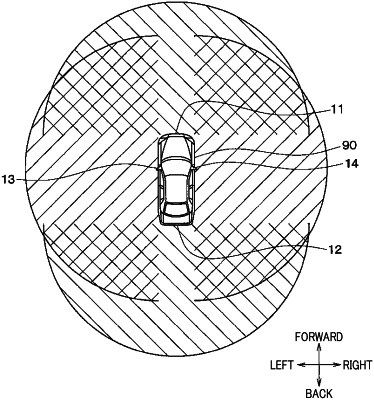| CPC G06V 20/58 (2022.01) [G06F 18/2113 (2023.01); G06F 18/24 (2023.01); G06V 10/751 (2022.01); G06V 10/76 (2022.01); G06V 30/2504 (2022.01)] | 11 Claims |

|
1. An apparatus for identifying an obstacle around a vehicle, comprising:
a non-transitory memory storing one or more computer programs; and
a processor executing the one or more computer programs to:
acquire an image captured by a camera mounted to the vehicle;
extract feature points of the image;
generate, for each of the feature points of the image acquired before a current time, an optical flow that is a movement vector from a feature point acquired before the current time to a corresponding feature point of the image acquired at the current time;
classify optical flows into groups based on pixel positions of the feature points; and
identify, for each of the groups, whether an object corresponding to a group of optical flows in the image is a stationary object, in which the stationary object comprises a regular or substantially regular pattern, or a moving object based on a degree of variability in lengths of the optical flows of the group relative to lengths of other optical flows of the group.
|